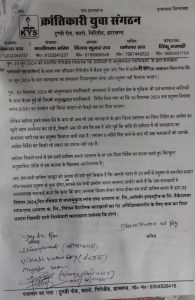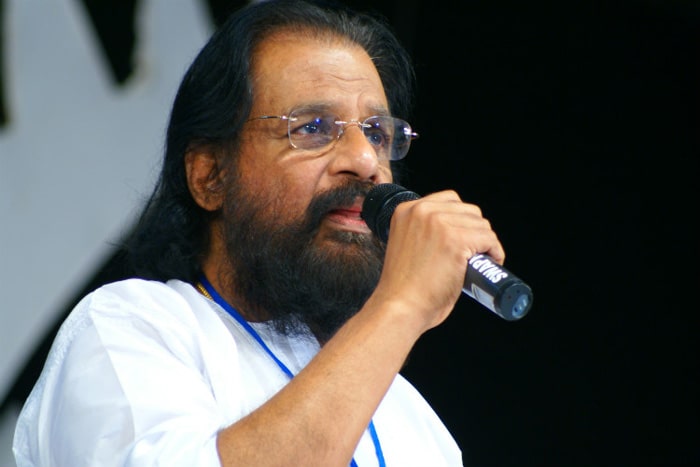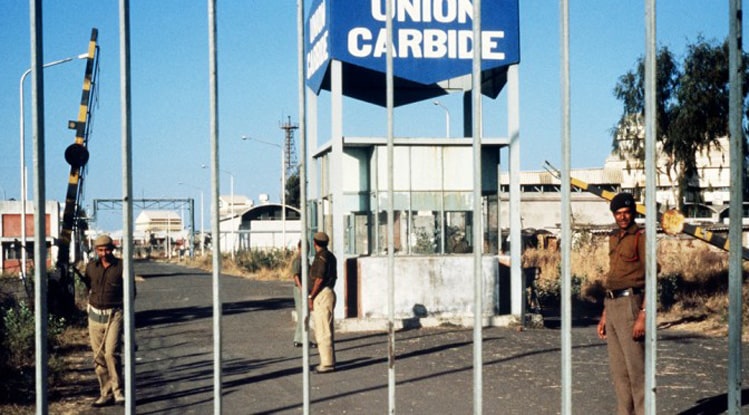[dropcap]I[/dropcap]n November 2024, an Islamophobic signboard at a Jagadhatri Puja pandal in Beldanga, Murshidabad district, West Bengal, sparked significant communal tensions. The signboard’s offensive message outraged the local Muslim community, leading to violent clashes. Stone-pelting was reported from both sides, resulting in vandalism and injuries. Fifteen Muslims sustained injuries, three of whom were reported to be in critical condition. The district administration imposed prohibitory orders and suspended internet services to control the situation.
However, mainstream media coverage primarily focuses on the disruption to public order rather than the Islamophobic provocation that initiated the violence. Furthermore, in cases where an individual from a Muslim background is accused, the media emphasizes the person’s religion. Headlines often highlight the Muslim identity of the accused, even when it is irrelevant to the case. Such narratives reinforce stereotypes portraying Bengali Muslims as ‘inherently criminal’ or ‘anti-social.’ For instance, reports of petty theft or smuggling in border districts like Malda and Murshidabad are framed as ‘organized crime’ by ‘Bangladeshi Muslims,’ even without evidence of cross-border involvement or communal intent.
In cases of communal violence, media narratives focus on the religious identity of Hindu victims while downplaying or ignoring attacks on Muslims. For instance, in cases of retaliatory violence during riots, Muslim victims usually receive less attention in terms of coverage, victim narratives, and follow-up reporting. This trend of framing shifts attention away from the root causes and demonizes the Bengali Muslim community, leading to their marginalization within the mainstream social spectrum. Conceptually, these incidents exemplify a particular mode of narrativity akin to racialized stereotyping, finely unbalanced by maintaining an uneven epistemology. Scholars in the concerned field term this epistemic Islamophobia, which, in the hands of the dominant community, not only alienates the Muslim community but also disrupts the social fabric of Bengal’s pluralistic society.
Understanding Epistemic Islamophobia
Epistemic Islamophobia refers to a form of Islamophobia that perpetuates distorted or erroneous ideas about Islamic beliefs, Muslims, and their cultural identity within society. Ramón Grosfoguel, a scholar of postcolonial studies, coined the term to describe hostility towards Islam that transcends simple prejudice or discrimination. Scholars such as Alia Al-Saji, Tariq Modood, Ziauddin Sardar, Naved Bakali, Sami Zubaida, and Khaled Abou El Fadl have significantly contributed to understanding epistemic Islamophobia by examining biases and misconceptions about Islam and Muslims. Their work, grounded in Western epistemology, postcolonial theory, and anti-discriminatory thought, has contributed to efforts to eradicate Islamophobia.
Epistemic Islamophobia does not merely create negative perceptions of Islam or Muslims through descriptions or expressions. Instead, it emerges from entrenched cultural biases rooted in education, media, literature, history, and the dominant cultural perspectives of society. This form of Islamophobia builds stereotypes over time, portraying Muslims as unjust, uneducated, uncivilized, or dangerous to society. As a result, erroneous or biased ideas about the Muslim religion, culture, and social identity emerge, leading to discrimination, disdain, and even justification for oppression against them.
While this discourse is considered Western, it is equally relevant in societies of the Global South. For example, West Bengal’s foundation lies in colonial history and the religious reform movements of the 19th-century Bengali Renaissance, but its influence persists today. Epistemic Islamophobia manifests in various ways in Bengal’s society. Textbooks in schools and universities often overlook or distort Muslim history, culture, and contributions. The role of Bengali Muslims in Bengal’s history is portrayed with bias and negativity.
Misrepresentation in Education and Popular Culture
Bengal’s media and films often associate Muslims with violence, terrorism, or political instability, thereby perpetuating misconceptions about their social and cultural role. In contemporary contexts, political speeches and rallies mostly depict the Muslim community as traitorous or foreign. Islam is portrayed as synonymous with “internal conflict” or “crime,” fostering hostile attitudes toward Muslims. This type of political discourse diminishes the legitimacy and value of Muslims in society.
Mosques, madrasas, or Islamic institutions are viewed with suspicion and labelled as weak or culturally antagonistic. Islamic education or ideas are dismissed as “antiquated” or “ignorant” by Western standards, and this imported narrative takes institutional form in our society, sidelining the epistemic contributions of Bengali Muslims.
Economic Disparities and Social Alienation
The Muslim community frequently faces economic marginalization, with significant disparities in access to education, healthcare, employment, and other opportunities. These inequities stem from an epistemic framework that undervalues Muslim knowledge and cultural contributions, thereby hindering their inclusion in the mainstream. Furthermore, ignorance or disdain persists toward their religious practices, attire, dietary habits, and lifestyle. For instance, Muslim attire often invites ridicule or dismissive remarks, with little effort made to understand their cultural practices.
Representation of Muslim perspectives is lacking in Bengal’s universities and cultural circles. Muslim thinkers, cultural activists, or intellectuals often fail to assert their influence in the mainstream, sidelining their artistic and intellectual contributions. On social media, blogs, and online platforms, Islamophobia against Muslims is vividly evident. Negative comments, fake news, and hate speech are spread, reinforcing misconceptions and distrust of Muslims.
The history and culture of Bengali Muslims are diverse and multifaceted. They are an integral part of the Indian subcontinent. However, a significant section of society perceives them through distorted and biased lenses. There is little respect or recognition for the heritage, language, and religion of Bengali Muslims. Many Muslim families here still face various social and economic challenges due to their faith. Misconceptions about Islam, disdain for its language, and ignorance of its culture create a form of epistemic Islamophobia.
Such misconceptions lead Bengali Muslims to face constant humiliation, discrimination, and social alienation. Their professional advancement, education, and societal acceptance are hindered by their religious identity. They are neglected in social and cultural domains as well. Muslim women, in particular, face compounded challenges, as they are subject to both criticism and internal oppression.
Combating epistemic Islamophobia requires establishing epistemic pluralism. This perspective considers the knowledge and beliefs of various nations, religions, and cultures. To foster justice and equality, society needs to cultivate a new awareness by addressing internal biases, oppression, and misconceptions.
Building a Discrimination-Free Society
To eliminate epistemic Islamophobia and promote equal dignity and rights for Bengali Muslims, we must first promote a pluralistic perspective in society. The first step is to show respect and support for different religions, cultures, races, and communities. This requires active engagement from educational institutions, media, and cultural organizations. Education should include a positive portrayal of the Muslim community and appropriately represent their heritage, culture, and language. Accurate information about Bengali Muslims’ history, including their contributions to literature, art, and science, should be highlighted.
While fostering mutual respect among religious communities is essential, it is equally important to instil confidence and pride among Muslims in their heritage, culture, and language. To tackle epistemic Islamophobia, society needs an open, inclusive, and pluralistic perspective. Raising awareness about Muslim contributions, incorporating accurate history and identity of Islam and Muslims in education, and discouraging negative attitudes towards Muslims in the media are crucial steps.
To create a humane, discrimination-free society for Bengali Muslims in the state, collective awareness and action against all forms of discrimination and Islamophobia are essential. By striving for mutual respect and understanding, we can build a pluralistic society where people of all religions and communities live with equal rights and dignity.













